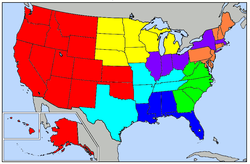Kenya
Kenya's first output of law reports was in the form of volumes under the citation E.A.L.R ('"East African Law Reports'"). They were first published between 1897 and 1905. Seven of these volumes were compiled by the Hon Mr Justice R. W. Hamilton, who was then the Chief Justice of the Protectorate and the reports covered all courts of different jurisdictions.
The 1922–1956 period saw the emergence of some twenty-one volumes of the Kenya Law Reports (under the citation K.L.R). These reports included the decisions of the High Court only and were collated, compiled and edited by different puisne judges and magistrates.
Then came the period covering 1934 to 1956 which saw the birth of the famous Court of Appeal for Eastern Africa Law Reports (E.A.L.R). These reports comprised twenty-three volumes altogether which were also compiled by puisne judges and magistrates, a Registrar of the High Court and a Registrar of the Court of Appeal for Eastern Africa. These volumes reported the decisions of the then Court of Appeal for Eastern Africa and of the Privy Council. They covered only those appeals filed from the territories.
The East Africa Law Reports (cited as E.A.) were introduced in 1957 and were published in nineteen consecutive volumes until 1975. These reports covered decisions of the Court of Appeal for East Africa and the superior courts of the constituent territories, namely, Kenya, Uganda, Tanzania, Aden, Seychelles and Somaliland. They were published under an editorial board consisting of the Chief Justices of the Territories and the presiding judge of the Court of Appeal for Eastern Africa. Following the collapse of the East African Community, under whose auspices the reports were published, the reports went out of publication.
The period before the resumption of the East Africa Law Reports saw sporadic and transitory attempts at law reporting. Firstly, with the authority of the then Attorney-General, six volumes named the New Kenya Law Reports covering the period between and including the years 1976 to 1980 were published by the East African Publishing House. These reports included the decisions of the High Court and Court of Appeal of Kenya and were compiled by the Late Hon Mr Justice S. K. Sachdeva and were edited by Mr Paul H Niekirk and the Hon Mr Justice Richard Kuloba, a judge of the High Court of Kenya. The publication of these reports ceased when the publishing house folded them up ostensibly on account of lack of funds.
Later, two volumes of what were known as the Kenya Appeal Reports were published for the period 1982–1992 by Butterworths, a private entity, under the editorship of The Hon Chief Justice A.R.W. Hancox (hence the pseudonym "Hancox Reports") who had the assistance of an editorial board of seven persons. These reports, as their name suggested, included only the decisions of the Court of Appeal of Kenya selected over that period.
Law reports relating to special topics have also been published. Ten volumes of the Court of Review Law Reports covering the period 1953 to 1962 and including the decisions on customary law by the African Court of Review were published by the Government Printer. There was no editorial board and it is not known who the compilers of these reports were. Their apocryphal origin notwithstanding, they were commonly cited by legal practitioners and scholars.
In 1994, the Kenyan Parliament passed the National Council for Law Reporting Act, 1994 and gave the Council the exclusive mandate of: "publication of the reports to be known as the Kenya Law Reports which shall contain judgments, rulings and opinions of the superior courts of record and also undertake such other publications as in the opinion of the Council are reasonably related to or connected with the preparation and publication of the Kenya Law Reports" (section 3 of the Act).
The Kenya Law Reports are the official law reports of the Republic of Kenya which may be cited in proceedings in all courts of Kenya (section 21 of the Act).

![The headnote from the leading English case Wilkinson v Downton [1897] 2 QB 57. A headnote.png](http://upload.wikimedia.org/wikipedia/commons/thumb/f/f9/A_headnote.png/250px-A_headnote.png)




